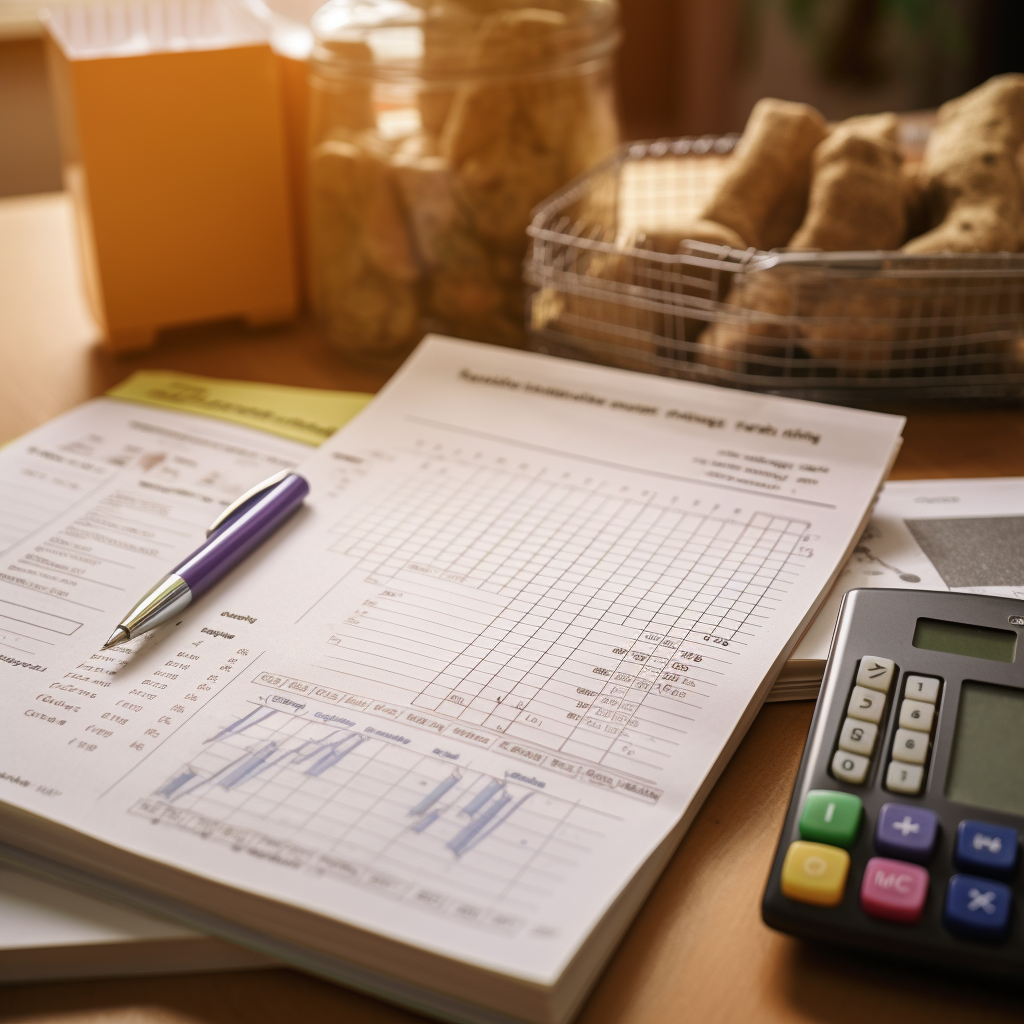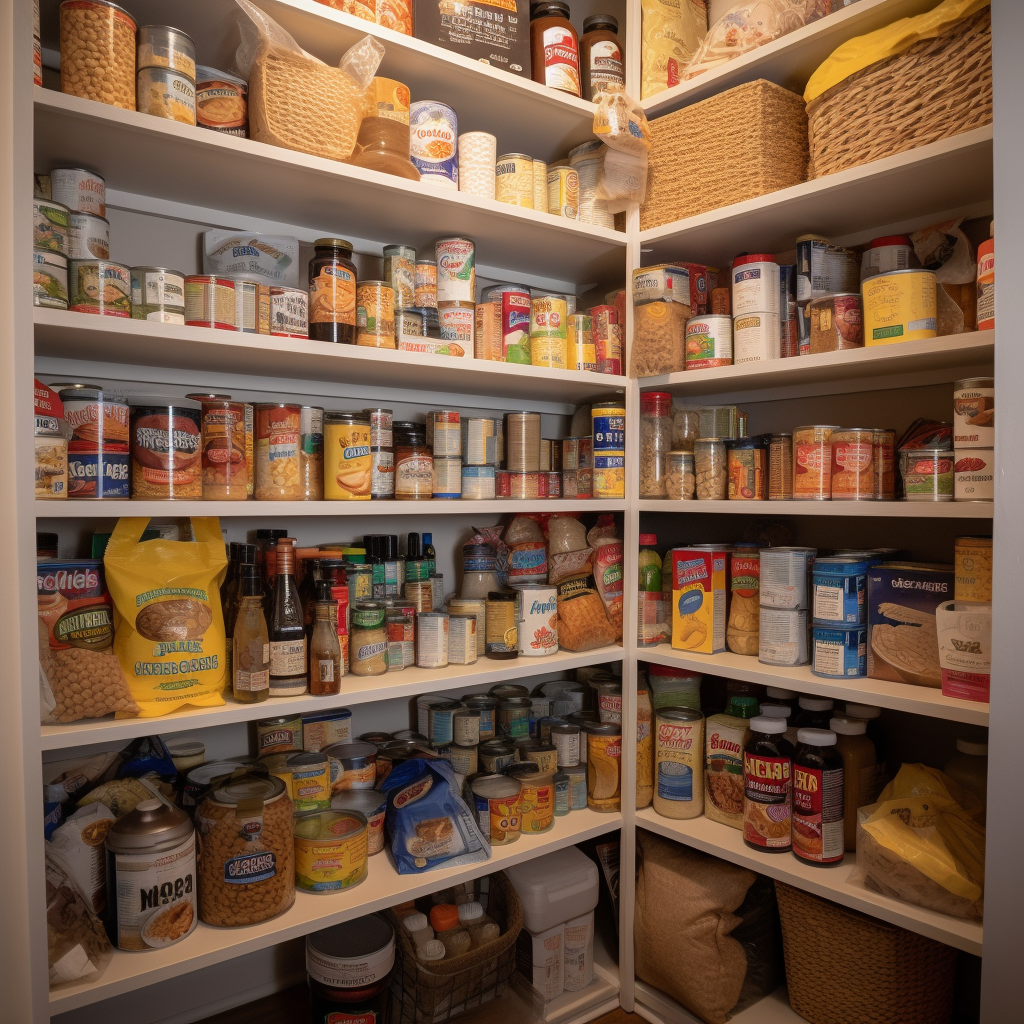Understanding the Power of Grocery Sale Cycles
When it comes to saving money at the supermarket, understanding grocery sale cycles can move you from being a casual shopper to a savings superstar. Here’s why.
Strategic Planning

When you know how these sales cycles operate, you can strategically time your shopping trips to align with the cycle. You can stock up on certain items when they’re on sale and avoid buying them when they’re at full price. With a bit of planning and a keen understanding of when your favorite items usually hit the sales, you can effectively master the art of buying more for less.
Budget Management

Getting a grip on these cycles won’t just help you make astute purchasing decisions; it’ll help you manage your budget better. Knowing how far you can stretch your dollar at the grocery store can impact your monthly budget and ultimately, your annual savings. This savings can then be rerouted to other important financial goals.
Emergency Preparedness

Aside from the financial benefits, understanding sale cycles can aid in emergency preparedness. Knowing when to nab deals on non-perishable goods can help you gradually build up a solid stash of groceries for emergencies without feeling a financial crunch.
Reducing Food Waste
Finally, being aware of sale cycles can help reduce food waste. By getting better at predicting cycles, you tend to avoid overstocking perishable goods that may not be consumed before their expiration date. It encourages you to buy what you need, when you need it, and limit waste—making it both an economically and environmentally smart practice. To sum it up, gaining a solid understanding of grocery sale cycles carries a multitude of benefits, from strategic shopping and better budgeting to environmental friendliness, to name a few. Surely, knowing the rhythm of the grocery sales dance is a move worth practicing. So, let’s strap in, observe the patterns, and dance to the tune of significant savings!
Knowing When To Shop
Grocery stores generally follow a weekly sales cycle that runs from Wednesday through Tuesday. Mid-week tends to be the ideal time to shop, as that’s when stores may reduce prices on items that haven’t sold throughout the week.
Recognize Seasonality: Pay attention to the agricultural seasons, as they influence the availability and cost of certain goods. Fresh produce, for instance, is usually more affordable when in season.
Stockpile Non-Perishables: Look out for significant sales on non-perishable items and consider buying these in bulk. Mason jars of marinara sauce or family-sized packs of toilet paper, for example, have lengthy shelf lives and provide opportunities for long-term savings.
Don’t Forget the Sales Bin: Always scan the clearance or sales bins. These often contain items nearing their sell-by date but are still perfectly good to use. From heavily discounted bakery items to markdowns on meat and dairy, real steals are waiting to be discovered.
Make a Shopping List and Stick To It: Those with a planned list tend to spend less than those who wander aimlessly through the aisles. Your list should reflect what’s on sale and necessary for your weekly menu. It’s beneficial to have a certain level of flexibility in your planning to incorporate good deals into your meals. By understanding sale cycles and being strategic about your purchases, you can dominate the grocery store game.
Enhance your shopping prowess, influence the weight of your grocery bags, and feel the delightful lightness in your wallet! In conclusion, the world of grocery sale cycles offers a treasure trove of opportunities to make savvy shopping decisions. With a little bit of initial research and some strategic planning, you can align your shopping habits with those tantalizing sales, resulting in significant savings. Equally important, understanding these cycles will make you a wiser consumer, able to distinguish between genuine bargains and flashy marketing tricks. So, the next time you go on a grocery spree, remember these tips and get ready to find those winning deals we all crave.
Unraveling the Grocery Store Sales Cycle
Beginning the voyage to unlocking significant savings requires an understanding of the grocery store sales cycle. Retailers run on a rotating sales schedule that usually spans between six to twelve weeks. So, when you see a bargain on a beloved item, you’ll likely see it again in a few weeks. Be sure to plan accordingly and purchase enough to tide you over until the next cycle, but be cautious. Buying too many perishables may lead to waste.
Pairing Coupons & Sales Cycles Want to up your saving game? Try combining coupons with the sales cycle. We’re not talking ‘Extreme Couponing’ here. Instead, strategically using a handful of coupons can help your budget go the extra mile. There are several smartphone apps such as Ibotta, Checkout 51, and Fetch Rewards that provide user-friendly electronic coupons.
Going with the Flow of the Seasons Seasonal produce is nature’s sales cycle at its finest. Fruits and veggies in-season not only offer rich flavor, but they are often priced much lower due to increased supply and demand. So, take a leaf out of Mother Nature’s book and go seasonal with your produce selections.
Rewards Programs & Loyalty Cards Many grocery stores offer rewards programs that can lead to significant savings. Members can collect points on purchases, which can be redeemed in future shopping trips. Plus, being in these programs often means getting exclusive access to additional discounts and offers.
Sticking to Your Budget & Grocery List Don’t walk into a store without a plan. Unplanned and impulse purchases are a surefire way to derail your budget. Keep yourself on track with a well-curated grocery list.
Avoiding Common Pitfalls Certain common pitfalls like shopping on an empty stomach, getting swayed by end-cap promotions, and failing to check unit prices can start to chip away at your savings. Keep your wits about you: always calculate unit prices, don’t just focus on eye-level shelves, and remember—promotional spaces typically host products from brands that paid for that space, not necessarily items on sale. Equipped with these handy tips and tricks, you’re all set to become a smart grocery shopper. Remember, every cent saved is a cent earned: you’re not just shopping, you’re strategizing! Where shopping meets strategy, that’s where the savvy savings lie. Enjoy the journey!
Smart Stockpiling: A Strategic Shopping Framework
Simply being aware of grocery shopping tips can bring about instant savings, but let’s level up: let’s think long term. That’s where understanding grocery sale cycles proves truly powerful—it allows you to master the art of stockpiling, preventing overstocking, and defining your ‘buy prices’. This framework will transform your grocery shopping strategy, freeing up more of your hard-earned money.
Efficient Stockpiling Explained
Contrary to popular belief, stockpiling isn’t about cramming your pantry full of cans in preparation for doomsday. It’s a strategic, calculated method of buying more of the items you frequently use when their price is low. Done right, stockpiling can significantly decrease your grocery bill by protecting you from fluctuating food prices. Here are some key tactics:
- Track Sale Cycles: The majority of grocery items operate on a 6 to 8-week sales cycle. Buying enough to last until the next cycle ensures you rarely have to pay full price.
- Get Creative with Space Management: Effective storage is vital for your stockpiling efforts. Make the most of your available space – under-bed storage or floating shelves can work wonders.
- Mind the Shelf-life: Buy only what you can consume before it expires. Overstocking perishables can lead to unnecessary wastage. Enter, ‘Buy Price’ ‘Buy price’ is the cut-off price you’re willing to pay for an item. Ideally, this price should be the same as or lower than the lowest price the item hits during its sales cycle. This concept ensures that you’re buying strategically, maximizing the bang for your buck!
Avoid Overstocking
Controlling the urge to overbuy can seem overwhelming, but following a multi-step strategy can greatly help:
- Inventory Checks: Regularly audit your home’s groceries before making a new shopping trip.
- Focused Shopping: Create a shopping list based on your inventory needs.
In Conclusion: Master the Grocery Sale Cycles for Powerful Savings
Decoding the mystery of grocery sale cycles can propel us to a new horizon of savings. With this potent knowledge, every-day grocery trips are transformed into strategic saving opportunities – allowing us to extend our dollars without trading off on our buying preferences. It is important to remember, however, that these savings strategies are not one-size-fits-all. Techniques that work universally might need tweaking to fit your personal lifestyle and needs. In the quest for savings, don’t be shy to try new approaches. Like any strategy, it may take a few attempts with grocery sale cycles before you unlock its full potential. You might not immediately establish the rhythm or find a bargain that seemed promising but turned flop.
Over time, as your knowledge flourishes, so too will your ability to identify the ideal times for bulk buys and once-a-year splurges. Combining this skill with other money-saving strategies—like price comparison, rewards apps, and bulk buying—can further help keep your shopping expenses under control. Furthermore, consider pursuing alternative strategies such as online grocery delivery discounts or savings through loyalty programs which can help further boost your overall savings. Saving money on groceries doesn’t need to involve radical changes. It’s more about learning, understanding and adjusting shopping habits towards more budget-friendly behavior. And understanding grocery sale cycles is a brilliant place to start this journey.
